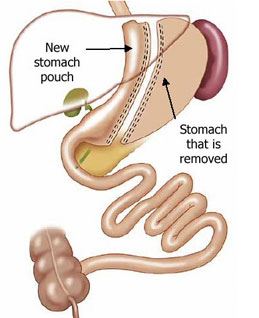Gastric Sleeve
Request an Appointment for Bariatric Gastric Sleeve
What Is Gastric Sleeve?
Sleeve gastrectomy, also known as gastric sleeve, is a restrictive procedure surgery. Gastric sleeve permanently reduces the size of the stomach.
By creating a smaller stomach, the stomach will fill more quickly, and the patient will feel satisfied from eating much less food.
This procedure can often be performed laparoscopically, using several small incisions.

During the procedure, the surgeon uses staples to divide the stomach vertically and remove 60 to 80 percent of it. The remaining stomach is roughly the size and shape of a banana.
Because a large portion of the stomach is removed, gastric sleeve is not reversible. The nerves to the stomach and the outlet valve remain intact to preserve the functions of the stomach while drastically reducing its size.
Originally, gastric sleeve surgery was designed to be followed up by a second bariatric procedure, such as gastric bypass, in patients who could not tolerate a combined weight loss surgery.
Recently, gastric sleeve surgery has been used as a standalone weight loss procedure. Because stomach function remains mostly intact, and because the intestine is not bypassed, this procedure has fewer side effects than gastric bypass.
Patients are less likely to experience dumping syndrome, when some foods may make them feel sick, or malnutrition.
Advantages and Disadvantages of Gastric Sleeve
Advantages
- It restricts the amount of food that you can eat
- Digestion and absorption are normal – the digestive tract is not changed in any way
- There are no needed “adjustments” after surgery
- Resolution of some co-morbid conditions such as Type II diabetes, hypertension, hyperlipidemia and sleep apnea
- Patients can lose between 60 to 75 percent of their excess body weight
Disadvantages
- Complication due to stomach stapling, including separation of tissue that was stapled and leaks form the staple line
- This is a non-reversible procedure, since a large part of the stomach is removed
- Nausea or the inability to eat certain foods
- Vomiting may occur from eating more than your stomach can hold
- Heartburn or “reflux”



